Health Computing > EXAM > PN I Final Exam Review | Rated A Guide | Latest 2021 / 2022 | Rasmussen College (All)
PN I Final Exam Review | Rated A Guide | Latest 2021 / 2022 | Rasmussen College
Document Content and Description Below
A hospitalized patient experiences a sharp, stabbing pain while visiting with his spouse. Both the patient and his wife become very concerned, and the patient's call light is activated. What referent ... initiated communication between the patient and the nurse? a. Interaction between the patient and his wife b. Concern on the part of the patient's spouse c. Pain experienced by the patient d. Activation of the call light Answer: c Pain is the referent that initiated the communication process. The interaction between the patient and his wife was the result of the patient's pain as was the concern of the patient's spouse. The call light could be considered a channel through which the patient's interaction with the nurse began. Which factor influences whether a message is effectively communicated? (Select all that apply.) a. Timing of the conversation b. Educational level of participants c. Mode of communication utilized d. Physical environment of discussion Answers: a, b, c, d Timing of a conversation dramatically influences the receptivity of the receiver. The educational level of those seeking to communicate has an impact on the type of language and technical terminology that can be used in conversation. Using more than one mode of communication can enhance the effectiveness of a message. Making sure the environment is devoid of excess noise and distraction can facilitate a greater understanding of shared information If a patient is grimacing, what assessment statement or question would be most beneficial to identifying the underlying cause of the nonverbal communication? a. "Did you lose something?" b. "You appear to be having pain." c. "I will turn off the lights and let you rest." d. "May I get you something to relieve your tension?" Answer: b Grimacing is a common nonverbal sign of pain. Sharing an observation encourages the patient to elaborate on nonverbal communication. Asking the patient whether something is lost indicates that the nurse has not attended to the nonverbal cues of the patient. It is important to do an assessment of the patient before initiating any interventions. What action by the nurse would most ensure accurate interpretation of patient communication? a. Providing feedback regarding the conveyed message b. Writing down the patient's conversational highlights c. Assuming significant cultural differences exist d. Verifying the patient's emotional state Answer: a Feedback is the most effective way to avoid misinterpretation of a message. It helps ensure that the message sent is perceived by the receiver in a way that is consistent with the intention of the sender. Writing down conversational highlights is a form of documentation that can still be misinterpreted unless feedback is sought. Avoid making assumptions regarding cultural differences. Verifying a patient's emotional state provides insight into a patient's state of mind, but it does not ensure accurate interpretation of a conversation. If a patient's verbal and nonverbal communications are inconsistent, which form of communication is most likely to convey the true feelings of the patient? a. Written notes b. Facial expressions c. Implied inferences d. Spoken words Answer: b Nonverbal communication is the more accurate mode of conveying feelings. When a patient's verbal and nonverbal cues are incongruent, it is important to explore observations made by the nurse to discern the true feelings of the patient. Written notes, implied inferences, and spoken words do not provide the opportunity for observing nonverbal cues. What strategy would be most effective in communicating with a highly anxious adult immediately before surgery? a. Providing specific, concise instructions b. Detailing likely causes of their anxiety c. Focusing on postoperative details d. Using instructional multimedia DVDs Answer: a Only essential information supplied in short, succinct sentences can be comprehended by adults who are extremely anxious. The source of this patient's anxiety is already stated to be the surgery, so the nurse need not elaborate on it. Postoperative teaching is best completed well in advance of surgery and reinforced after completion of the procedure. Multimedia DVDs are not effective teaching tools immediately before surgery. They may be helpful for a patient to watch at least 24 hours before a scheduled procedure to allow time for elaboration on topics not totally understood by the patient. Nurses must always check with the patient to verify that critical information is understood regardless of what form of communication has been used. What action should the nurse take if an alert and oriented patient asks the nurse for personal contact information? a. Ask the patient why the personal information is needed. b. Report the interaction to the nursing supervisor immediately. c. State that it would not be appropriate to share that information. d. Change the subject, and hope that the patient does not ask again. Answer: c It is important for the nurse to immediately communicate that sharing personal contact information with patients is inappropriate and violates professional role boundaries. Asking "why" questions and changing the subject are nontherapeutic. Neither action will discourage the patient from further infringing on the nurse's personal right to privacy. Reporting the interaction to a supervisor may be helpful for preventing other nurses from experiencing similar requests; however, the first action taken by the nurse should be to maintain professional role boundaries. What would be the best therapeutic response to a patient who expresses indecision about recommended chemotherapy treatments? a. "Can you tell me why you are undecided?" b. "It's always a good idea to have chemotherapy." c. "You should follow whatever your health care provider recommends." d. "What are you thinking about the treatments at this point?" Answer: d Asking open-ended questions allows patients to share freely on a subject. "Why" questions, using closed-ended questions, and giving advice are all nontherapeutic communication techniques that limit patient reflection and sharing on topics of concern. Which statement is most accurate regarding symbolic expression? a. Skills confidence can be shared most effectively by nurses through wearing distinctive clothing. b. Clothing choices by a hospitalized patient rarely reflects his or her economic resources. c. Make-up use by a patient is unnecessary for any reason during hospitalization. d. Nondramatic make-up use and minimal accessorizing by nurses demonstrates professionalism. Answer: d Nurses demonstrate professionalism by adhering to institutional dress codes that require minimal accessorizing and cosmetic use. Wearing distinctive clothing is not linked to skills confidence. Clothing choices often reflect the economic resources of an individual, and make-up use by a hospitalized patient is a personal preference that should be honored. Which defense mechanism is being exhibited when a 27-year-old patient insists on having a parent present during routine care? a. Denial b. Regression c. Repression d. Displacement Answer: b Young adults who require their parents' presence for routine care are exhibiting regression, which is behavior consistent with earlier stages of development. Patients in denial refuse to see the reality of their situation. Repression is storing painful feelings in the unconscious, causing them to be temporarily forgotten. Displacement transfers emotional energy away from the actual source of stress to an unrelated object or person. The nurse receives change of shift report on the five assigned patients and reviews prescriptions, treatments, and medications scheduled for the shift. Based on analysis of this information, the nurse chooses which patient to assess first. Which process of critical thinking best describes the nurse's action? a. Problem solving b. Decision making c. Judgment d. Reasoning Answer: b The nurse used decision making to guide which patient to see first, based on an analysis of patient data and care needs. Problem solving is used when the nurse is faced with a situation that requires analysis and a solution. Judgment is used in the decision-making process but does not result in the actual decision. Reasoning is logical thinking that may be used in decision making but, again, is not the actual result. Decision making culminates in a definitive action. In approaching a new clinical situation, the nurse uses which question to facilitate precision in critical thinking? a. "What do I know about this situation?" b. "What additional details do I need to gather?" c. "Does the clinical presentation correlate with the diagnosis?" d. "Are the treatments appropriate for the diagnosis?" Answer: b Precision relates to providing sufficient detail to lead to an exact understanding of the situation. What do I know about this situation? is focused on self-reflection about what is known about the situation. Does the clinical presentation correlate with the diagnosis? relates to relevance. Are the treatments appropriate for the diagnosis? relates to logic. Which question would be most appropriate for the nurse to ask while evaluating the relevance of patient data? a. Do these findings make sense? b. How can this information be verified? c. What are the most significant factors in the problem? d. What is the relationship of this information to other data? Answer: c Determining relationships is effective in establishing the relevance of data. Verification of information is related to accuracy, making "sense" relates to logic, and significance more closely relates to depth. The routine use of the intellectual standards helps improve critical thinking. The nurse is assigned to develop a plan of care for a patient with a medical diagnosis that is unknown to the nurse. Guided by critical thinking, which action should the nurse take first? a. Ask the patient to describe the chief complaint b. Request that another nurse be assigned to this patient c. Review data about the medical diagnosis and routine management d. Complete a physical assessment of the patient Answer: c The priority action is to find the necessary information/data needed to guide the nursing care. The nurse cannot apply critical thinking about something that is unknown. If the nurse asks the patient to describe the chief complaint or completes the physical assessment with limited knowledge of the disease process, the nurse has nothing to corroborate or compare. Requesting another nurse to care for the patient does not address the lack of knowledge. The nurse obtains a lower-than-normal (88% on room air) pulse oximetry reading on a patient. Which actions by the nurse result from accurately employing the critical-thinking skill of analysis in the nursing process? (Select all that apply. ) a. Assessing the patient for symptoms of hypoxia b. Providing oxygen according to standing orders c. Elevating the head of the bed, if not contraindicated d. Allowing the patient to be alone to rest more comfortably e. Discussing adaptations needed for daily activities with the patient Answers: a, b, c Analysis involves assessing a situation and determining what should be done based on an appropriate rationale. In this case, assessing the patient for symptoms of hypoxia, providing oxygen as ordered, and elevating the head of the bed help determine the extent of air hunger, promote increased gas exchange, and ease the effort of breathing. Leaving a patient who has a low pulse oximetry reading alone is potentially dangerous. Discussing nonemergent information with a patient experiencing air hunger requires increased oxygen consumption and is inappropriate. Which of the following actions reflects inductive reasoning? a. Using subjective and objective data to confirm a diagnosis b. Assessing for specific clinical presentations based on a disease process c. Correlating elevated blood pressure to pathophysiology d. Validating an automatic blood pressure cuff reading with a manual measurement Answer: a Inductive reasoning uses specific facts or details to make conclusions and generalizations (i.e., going from specific to general). Using assessment data (specific data) to arrive at a conclusion (diagnosis) is an example of induction. Deductive reasoning involves generating facts or details from a major theory, generalization, or premise (i.e., from general to specific). The validation of a disease process (general) by specific assessment parameters (signs and symptoms, diagnostic study results, etc.) is an example of a deduction. The nurse is completing an assessment on a patient with sudden onset of abdominal pain. During the assessment, the nurse considers similar presentations and the underlying pathophysiology related to the patient's clinical manifestations. Which critical-thinking skill should the nurse use first to determine the cause of the patient's abdominal pain? a. Evaluation b. Interpretation c. Reflection d. Inference Answer: b Nurses use interpretation to understand and explain the meaning of data. In this case, the nurse must first interpret the assessment data before reflecting on its meaning, evaluating its reliability or credibility, and making inferences that will have an impact on treatment options The nurse can facilitate critical thinking through the use of which interpersonal skills? (Select all that apply.) a. Teamwork b. Intuition c. Judgment d. Conflict management e. Advocacy f. Reasoning Answers: a, d, e Interpersonal skills such as teamwork, conflict management, and advocacy engage others in the process of critical thinking. Intuition, judgment, and reasoning are intrapersonal aspects of critical thinking that the nurse may use personally to better understand a situation. In providing care to a patient admitted to rule out human immunodeficiency virus (HIV) infection, wearing gloves during which activity may be an indication of bias? a. Collecting the patient's medical history b. Administering IV medications c. Performing oral care d. Completing a bed bath Answer: a Donning gloves every time the nurse enters the patient's room may reflect bias related to the care of a patient with HIV infection and may interfere with the development of a therapeutic relationship with the patient. The patient with HIV is on standard precautions unless there are complications that put the nurse at risk of blood or body fluid exposure. It would be appropriate for the nurse to wear gloves during the other activities. During the assessment of a patient admitted for a total hip replacement, the nurse asks the patient to explain prior hospital experiences and, more specifically, any operative experiences. These questions reflect the nurse's use of which intellectual standard of critical thinking? a. Clarity b. Logic c. Precision d. Significance Answer: a Patient information must first meet the intellectual standard of clarity before it is evaluated for precision, logic, or significance. [Show More]
Last updated: 1 year ago
Preview 1 out of 42 pages
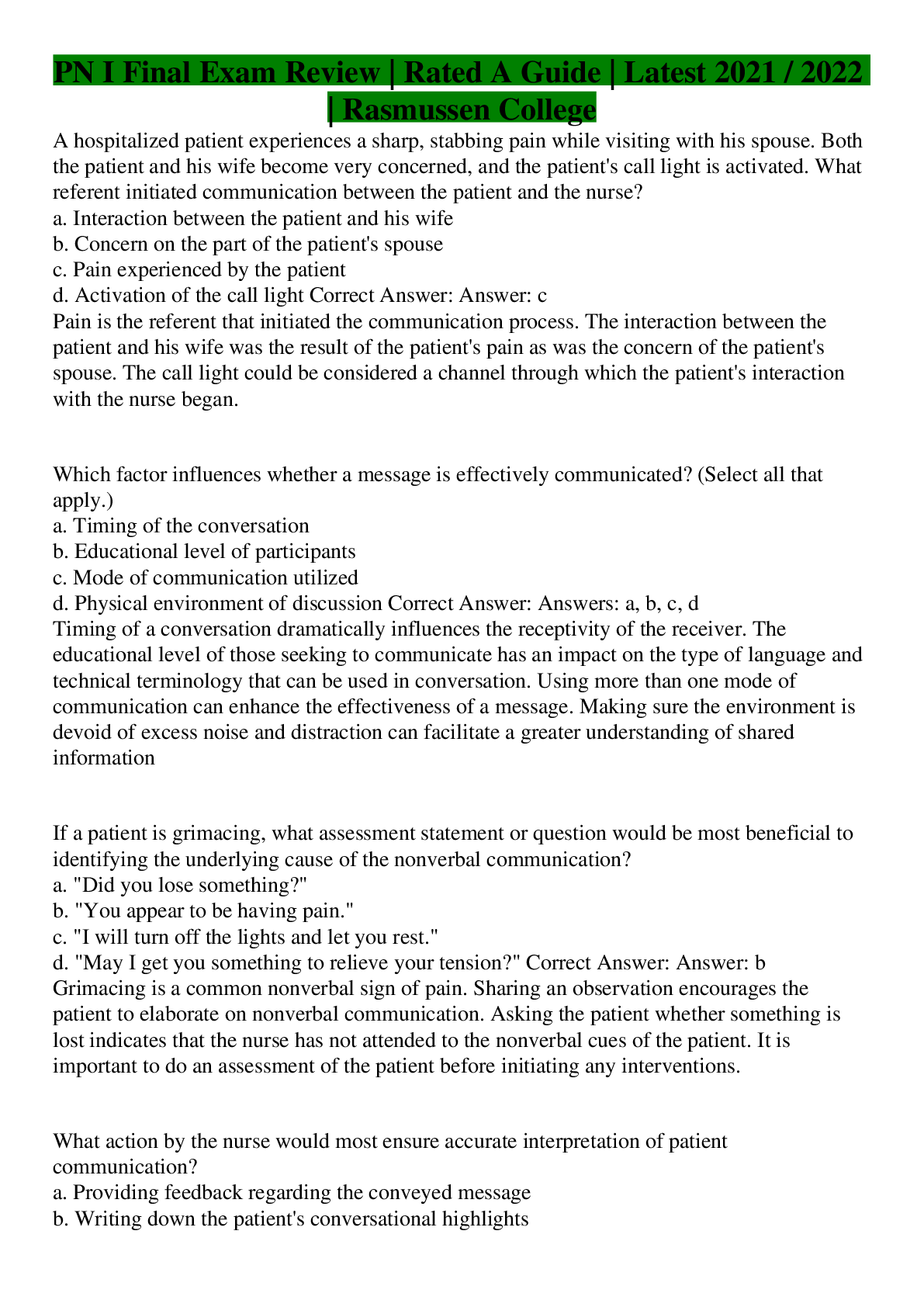
Buy this document to get the full access instantly
Instant Download Access after purchase
Add to cartInstant download
We Accept:

Reviews( 0 )
$16.50
Document information
Connected school, study & course
About the document
Uploaded On
Sep 07, 2022
Number of pages
42
Written in
Additional information
This document has been written for:
Uploaded
Sep 07, 2022
Downloads
0
Views
30



.png)
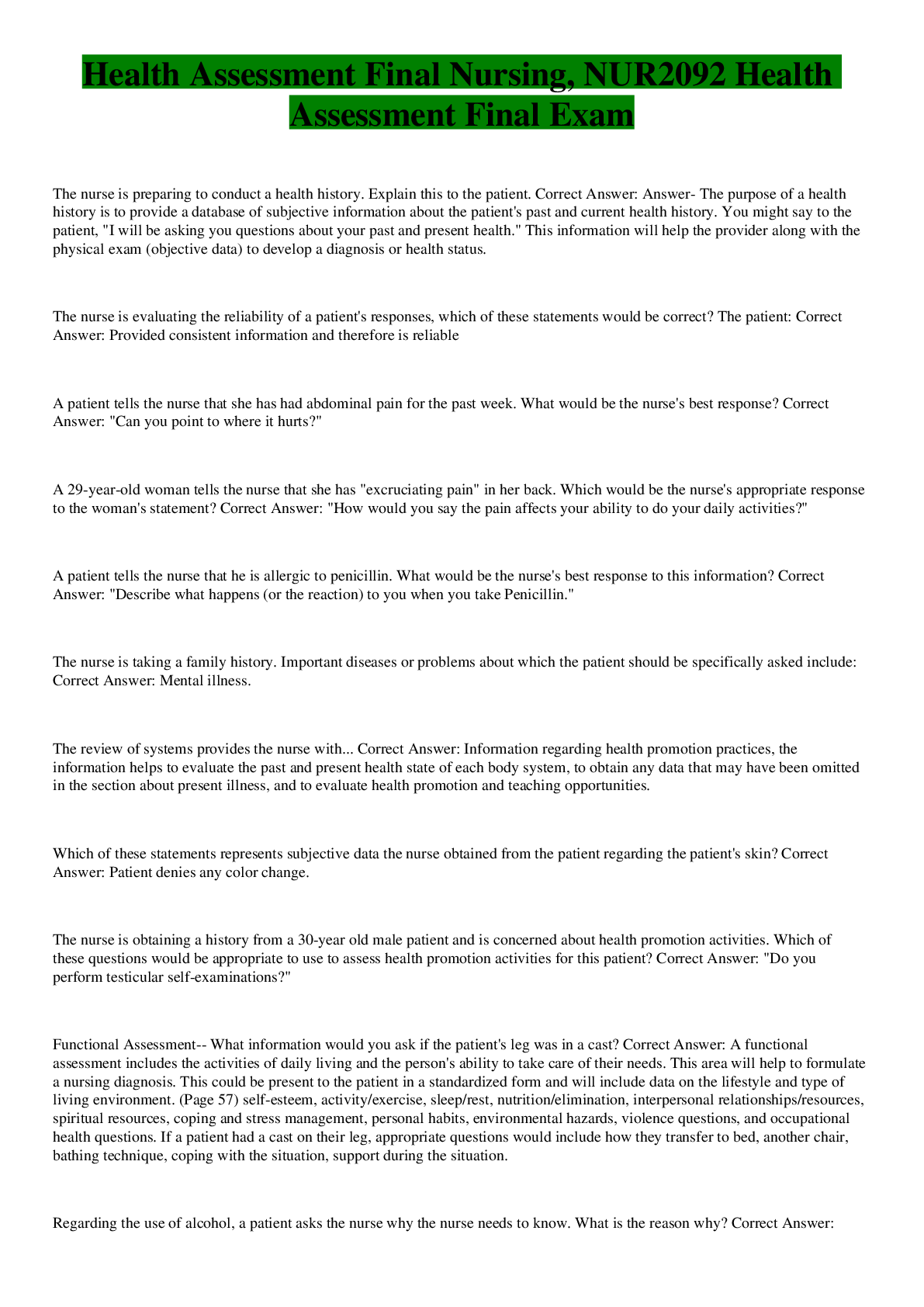

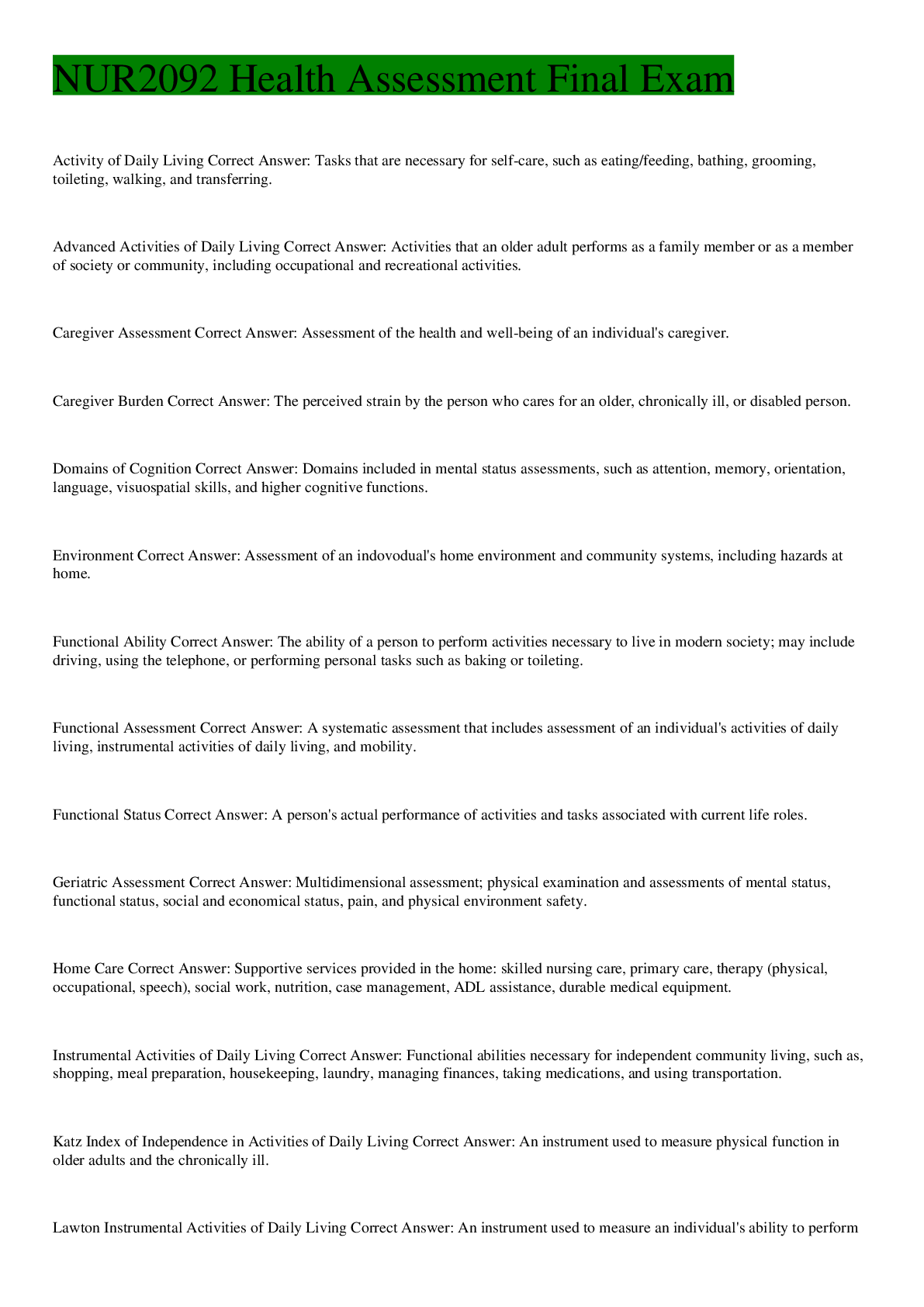
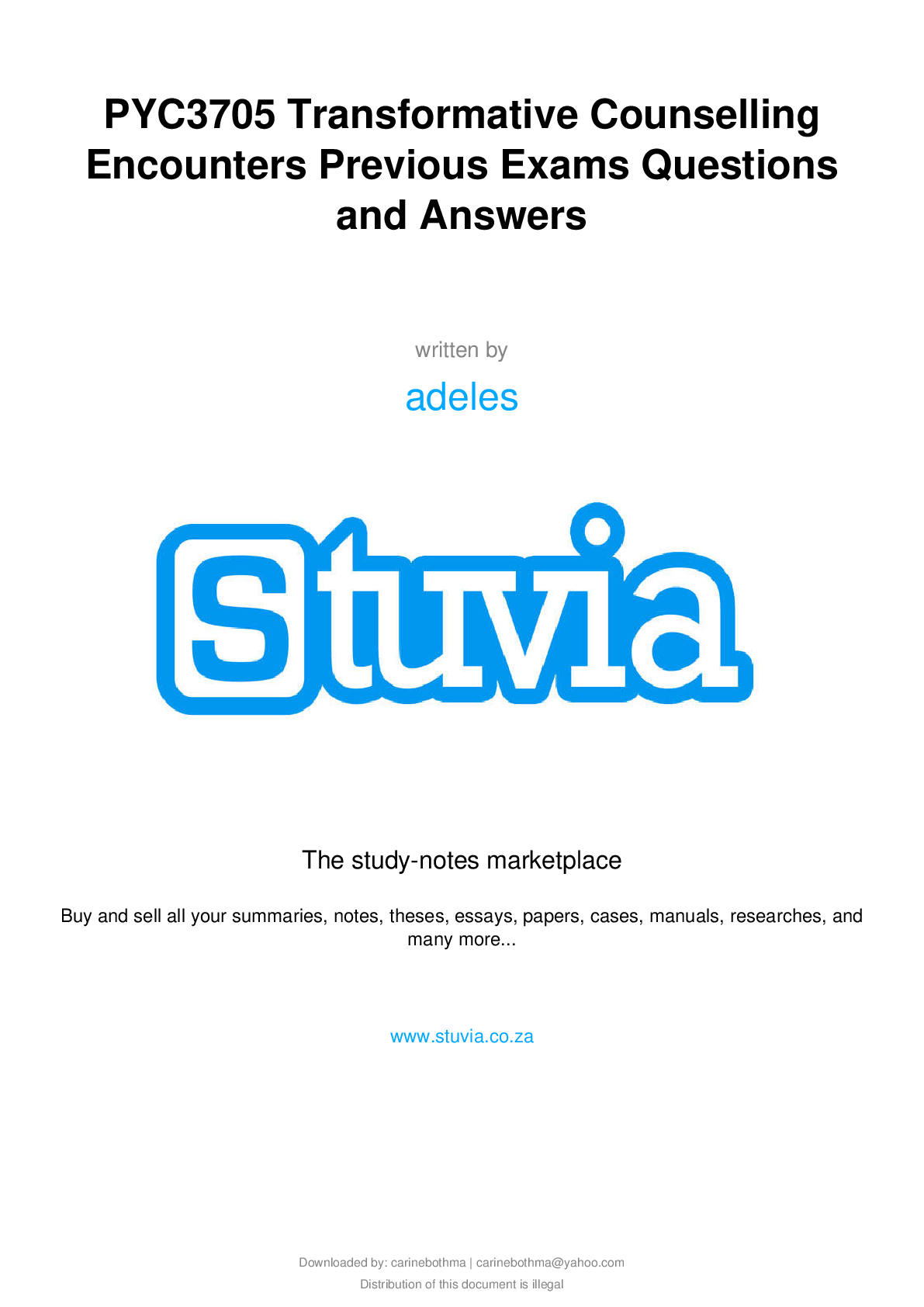


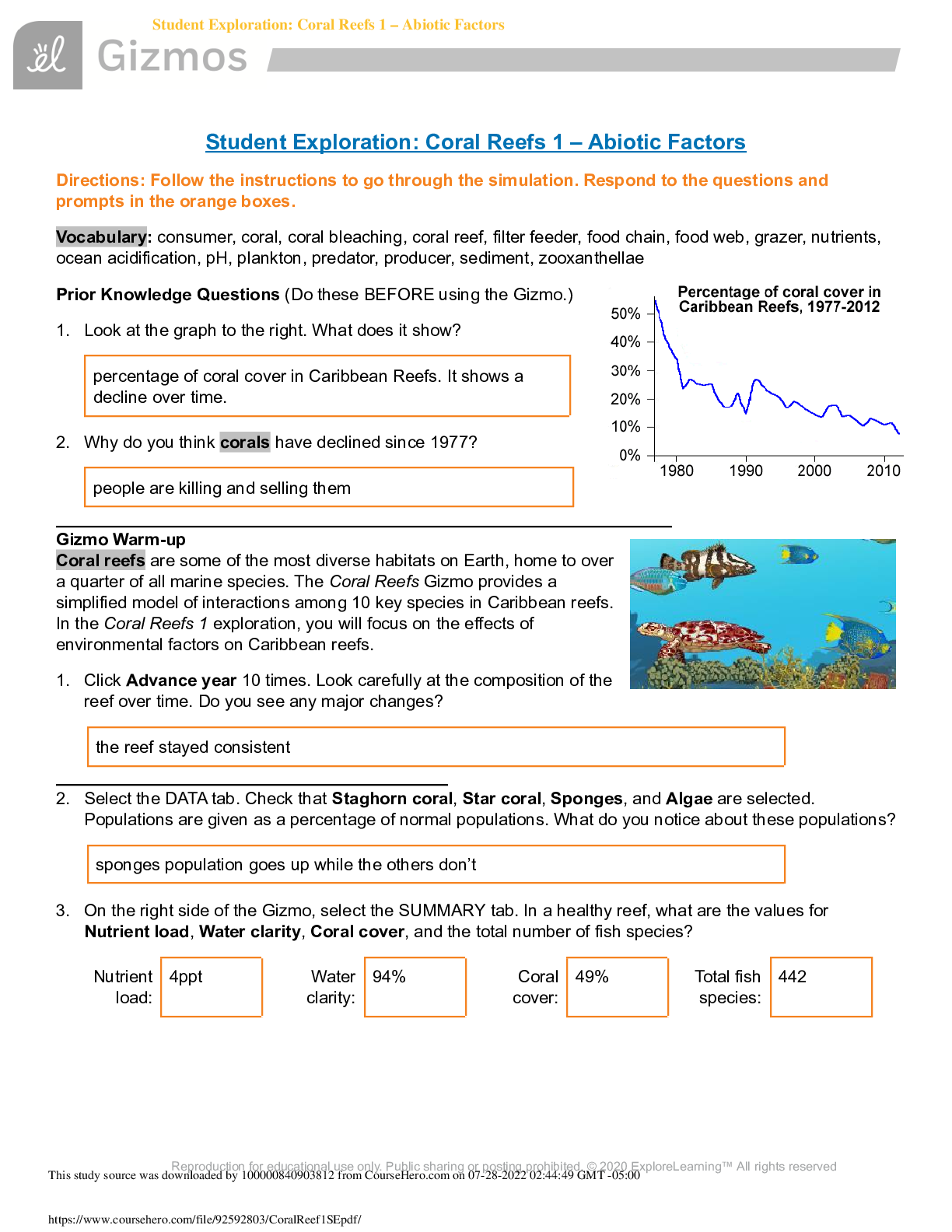
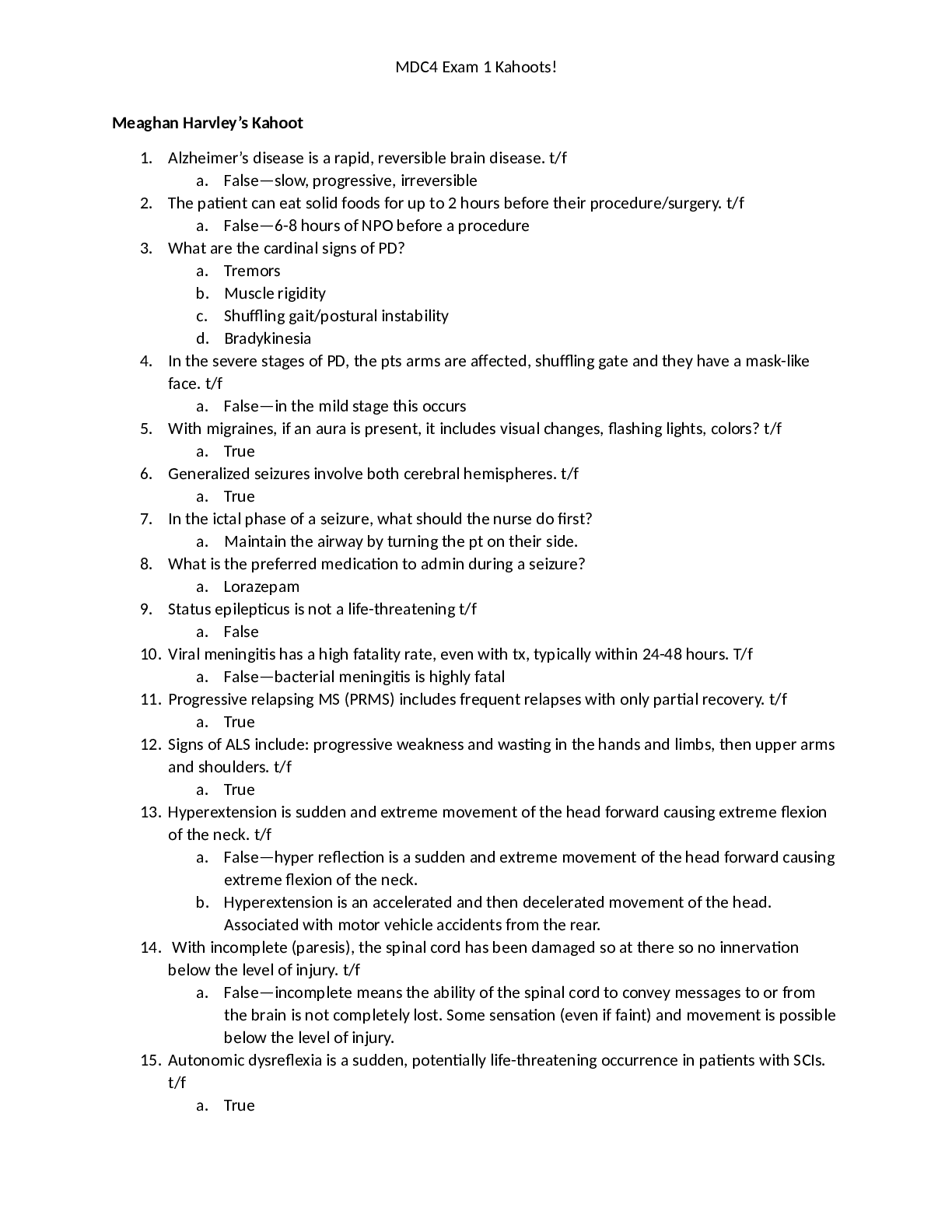
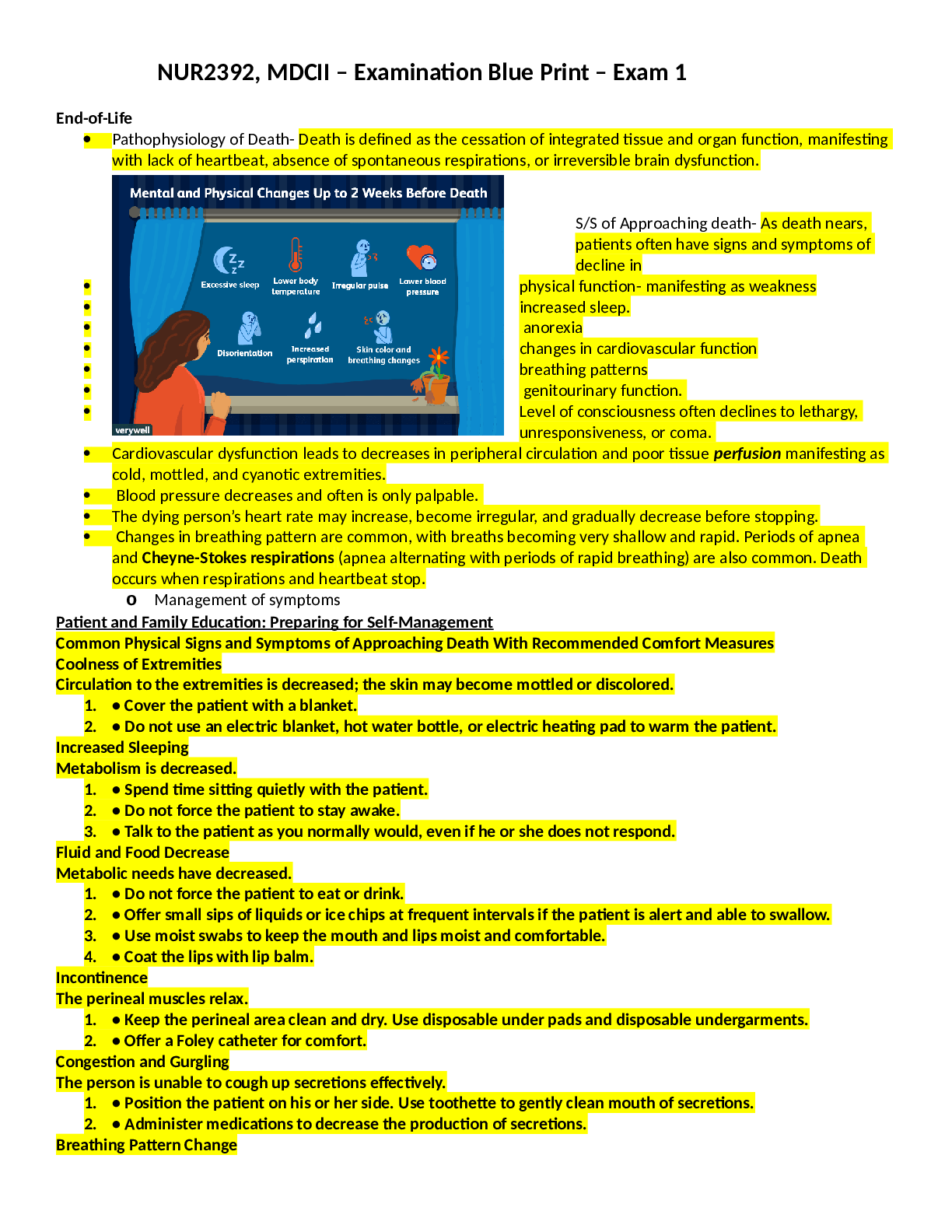
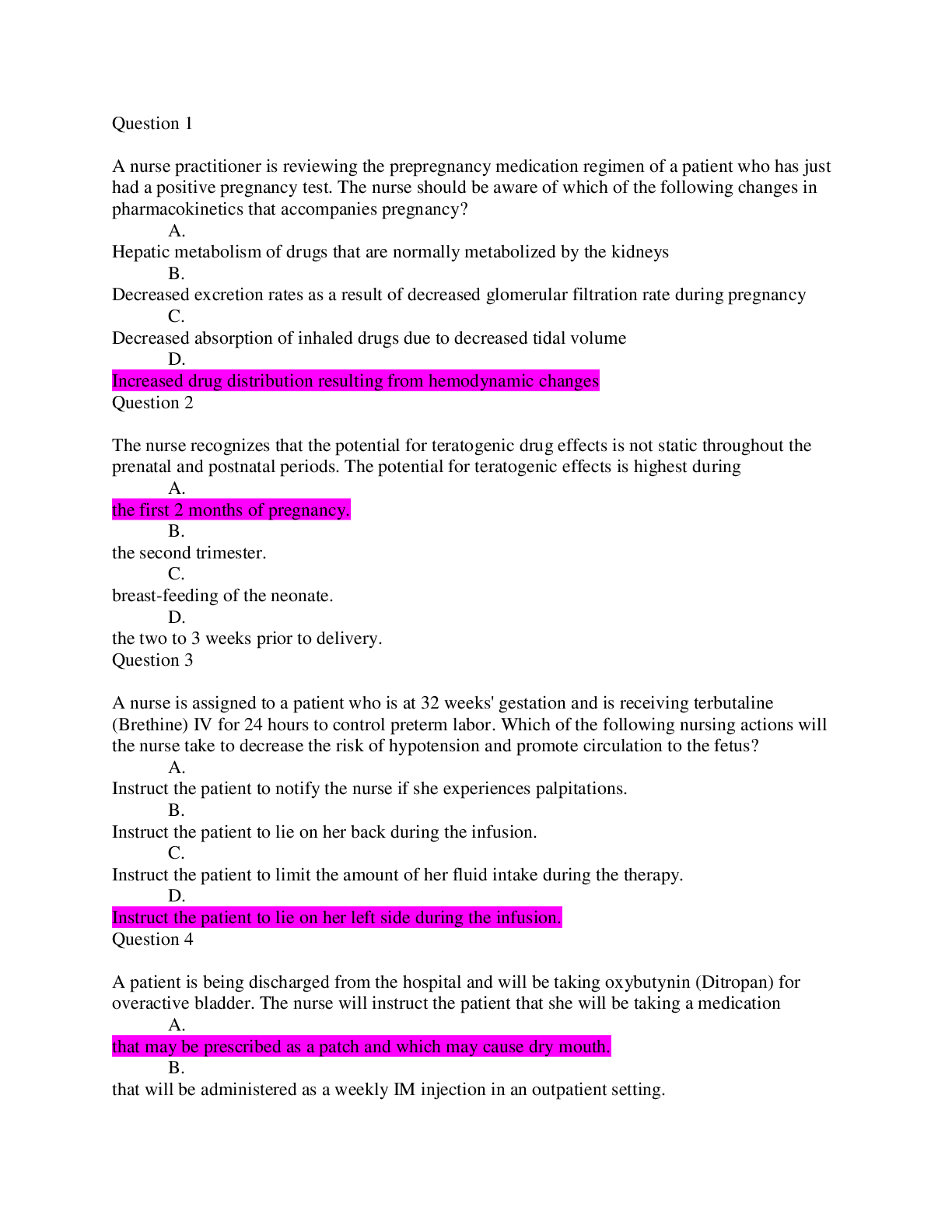
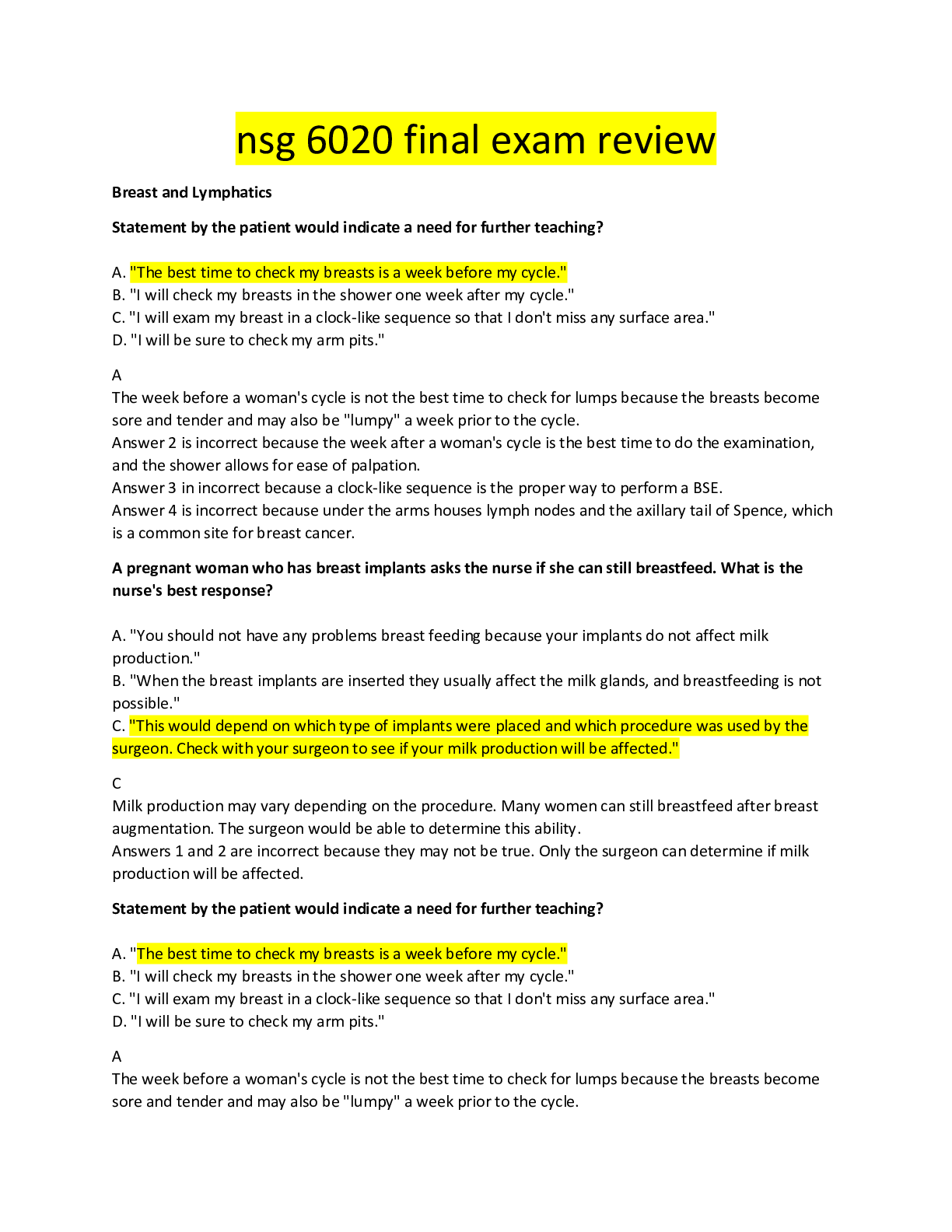
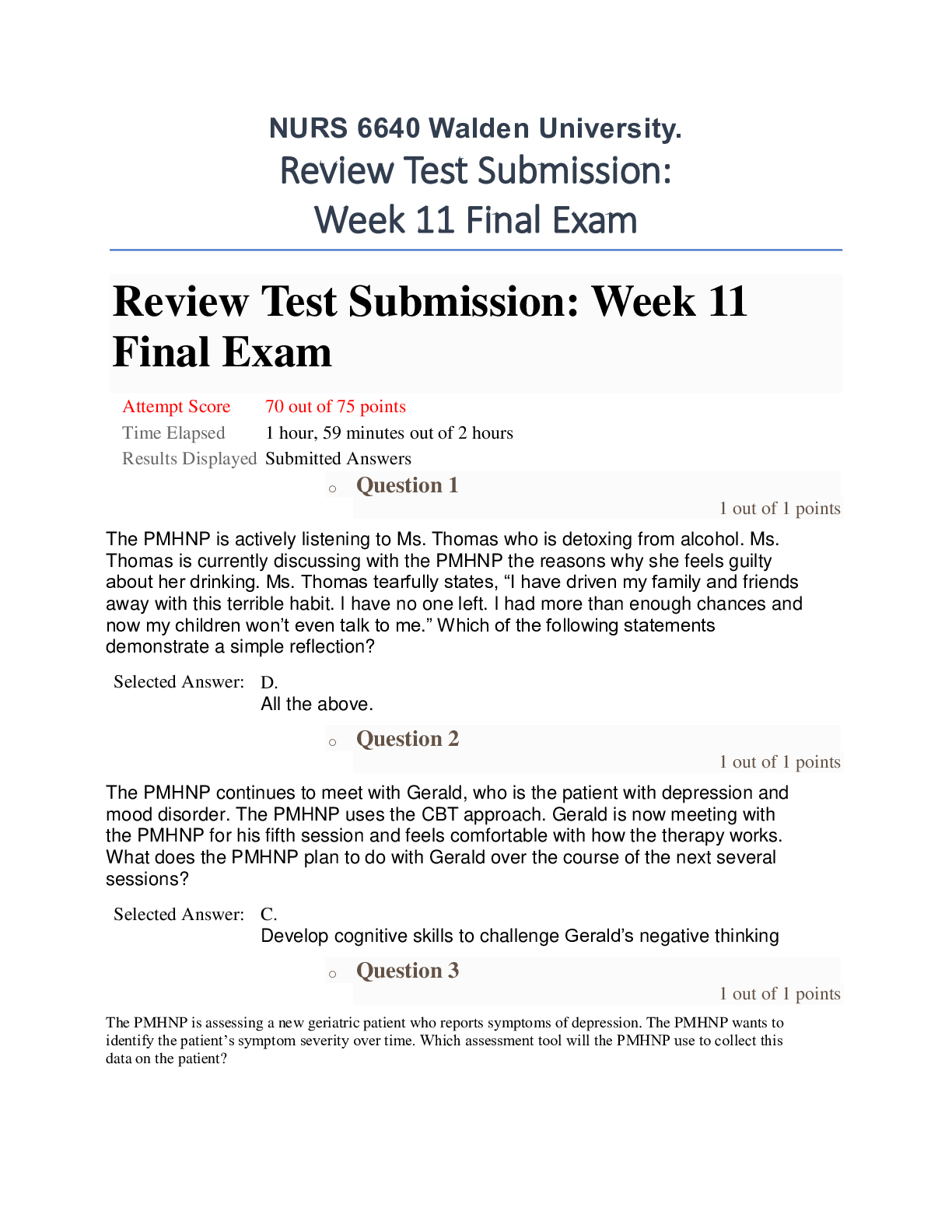
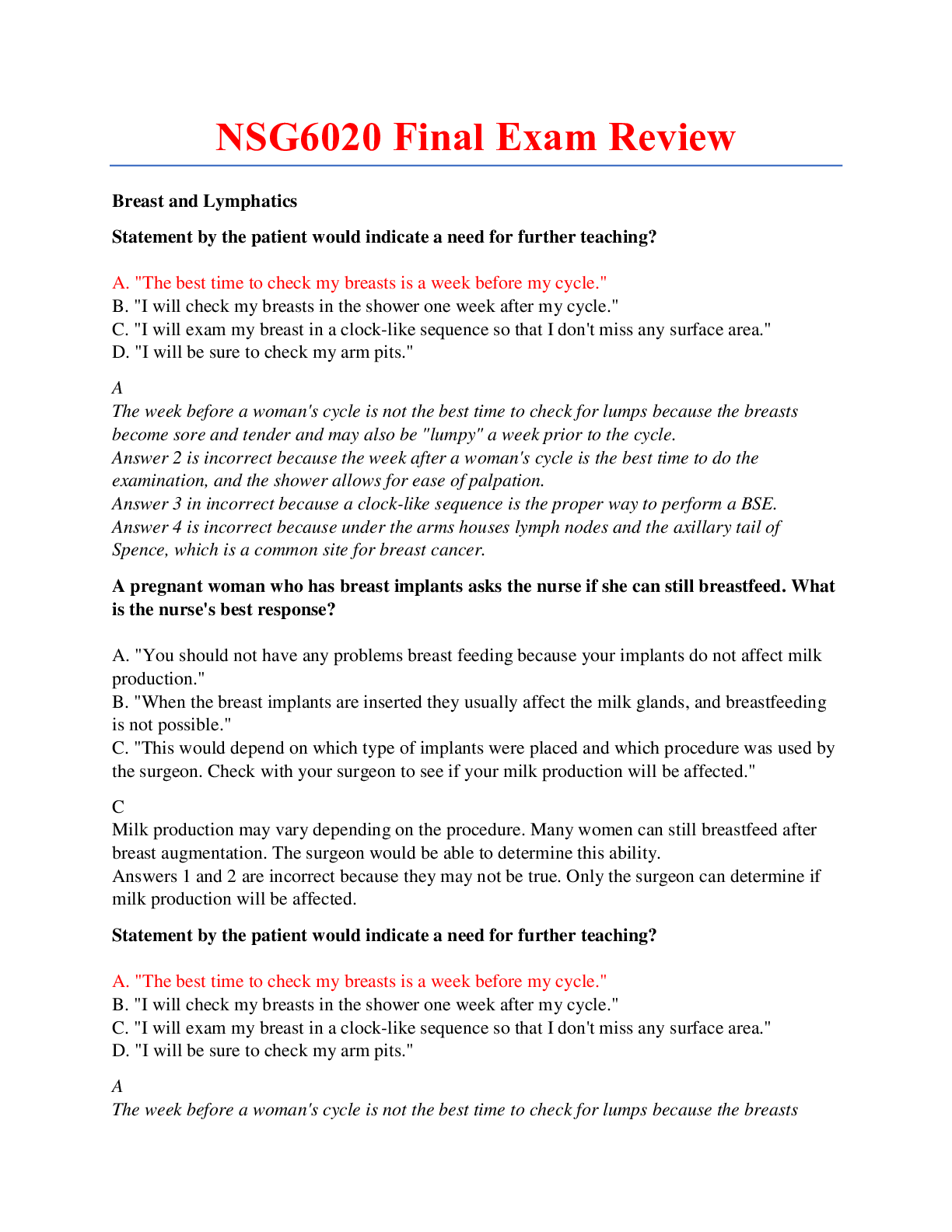

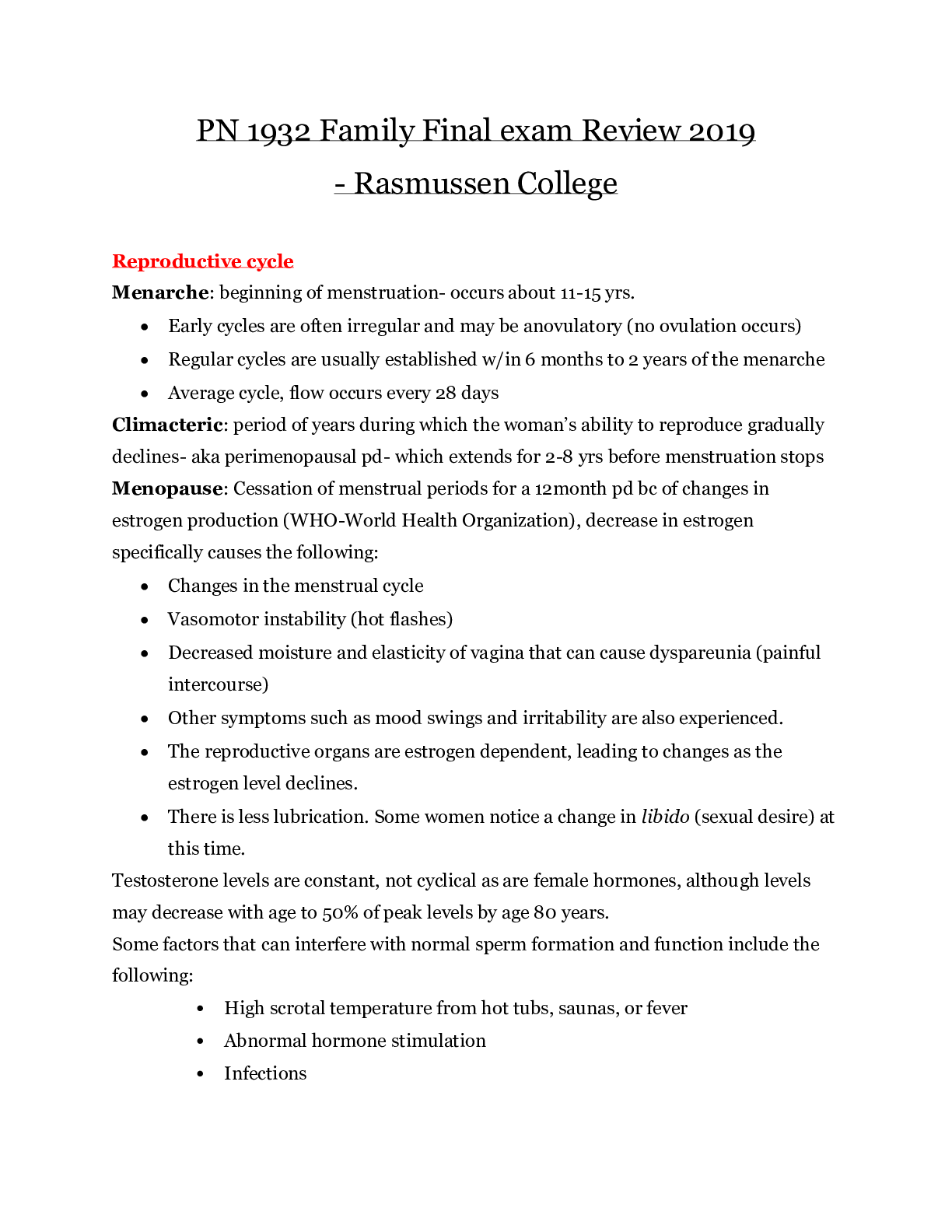
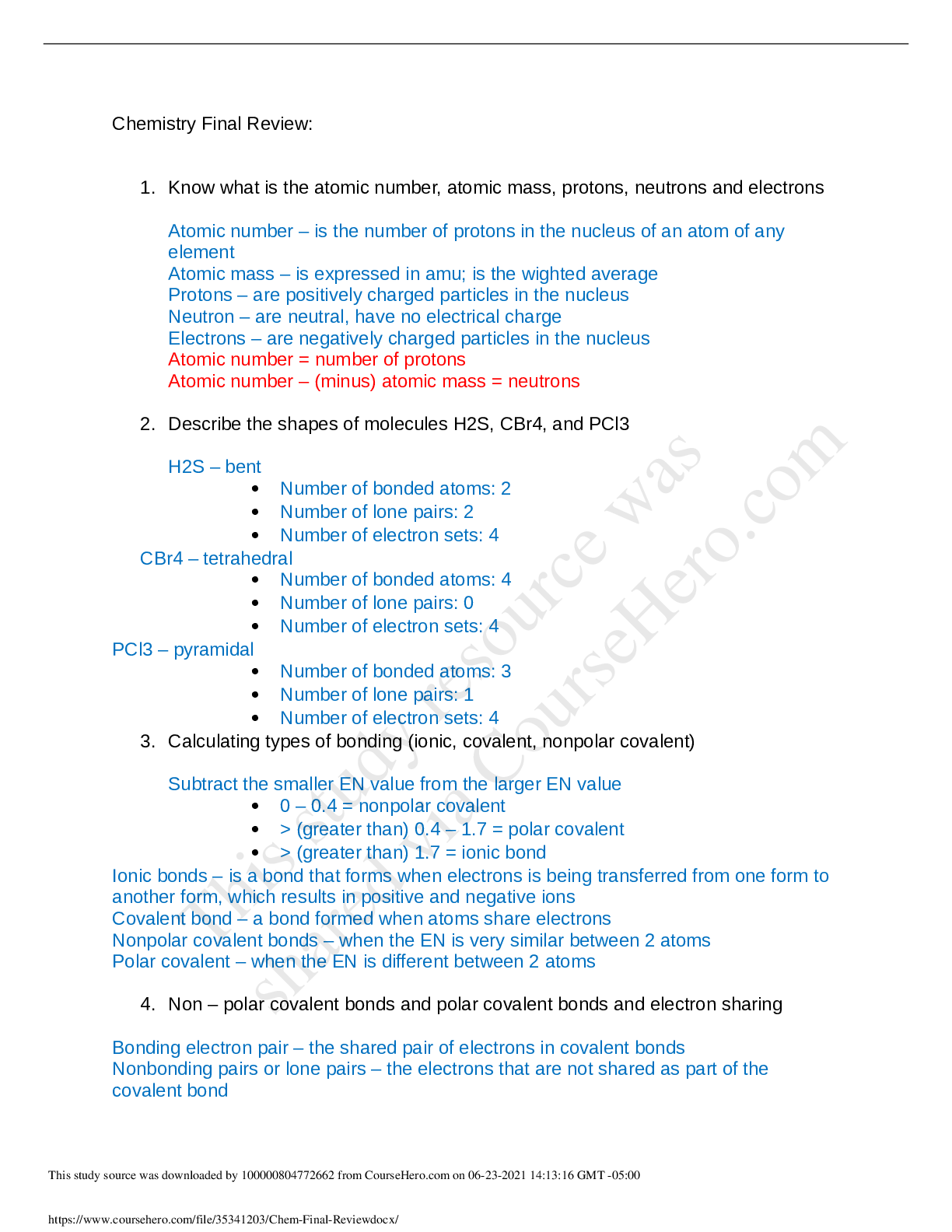
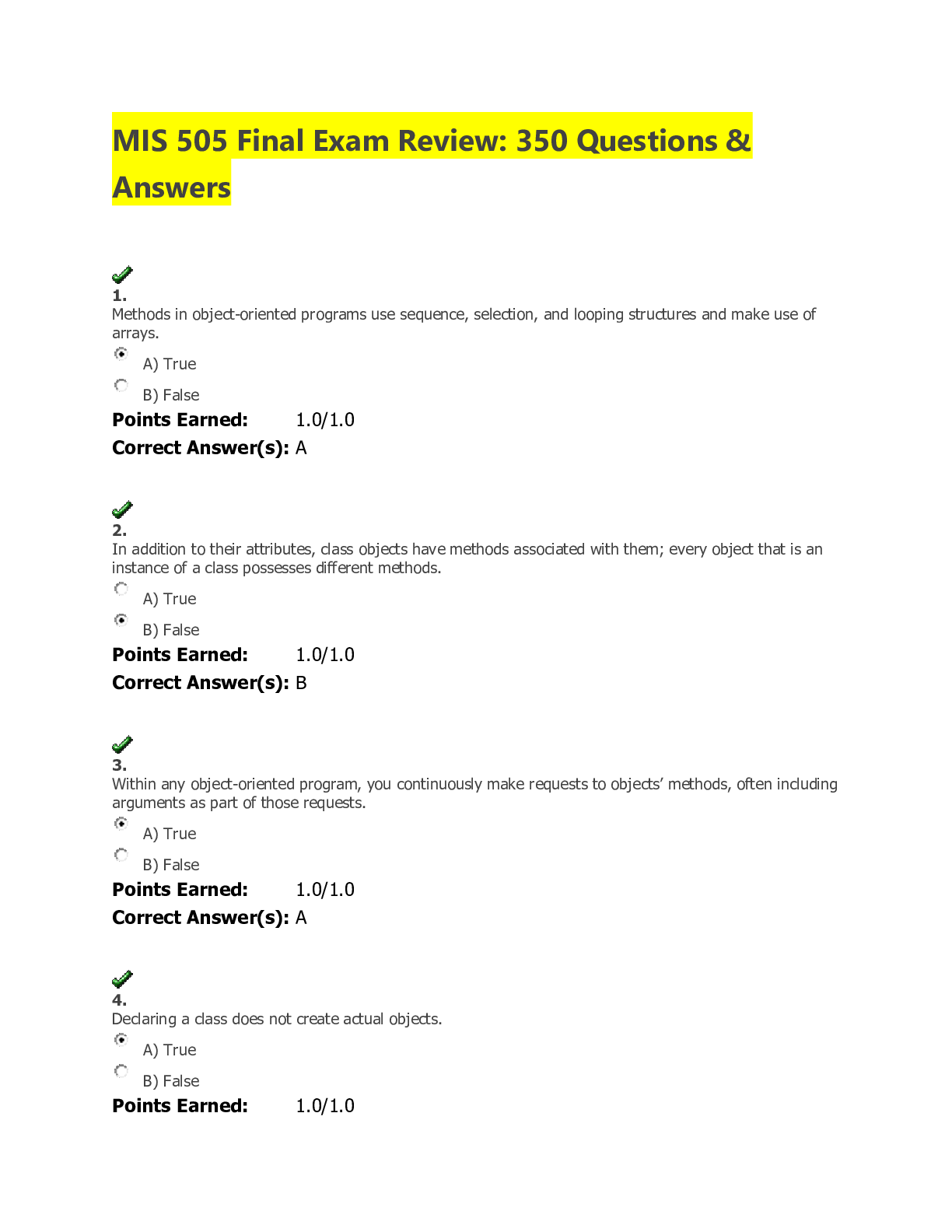
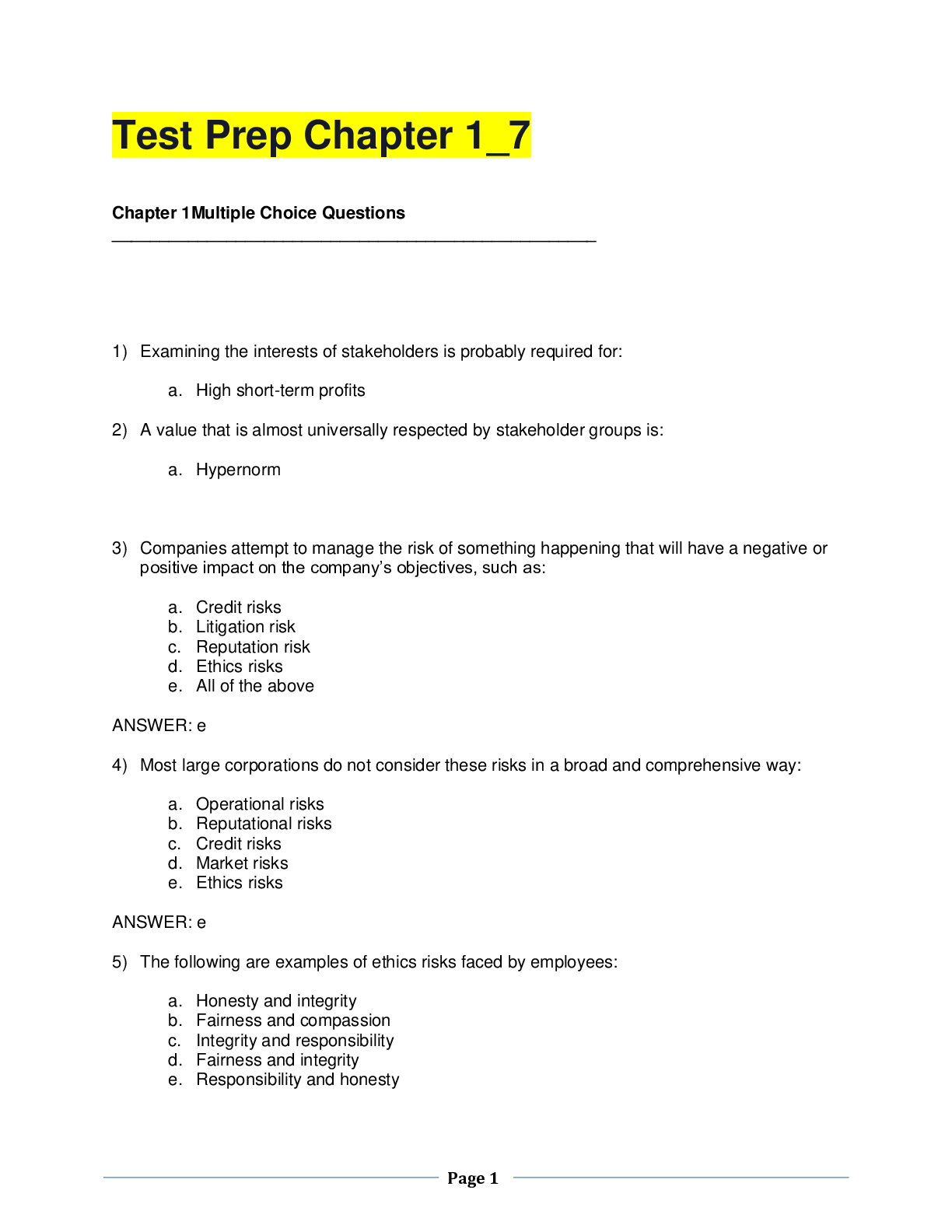
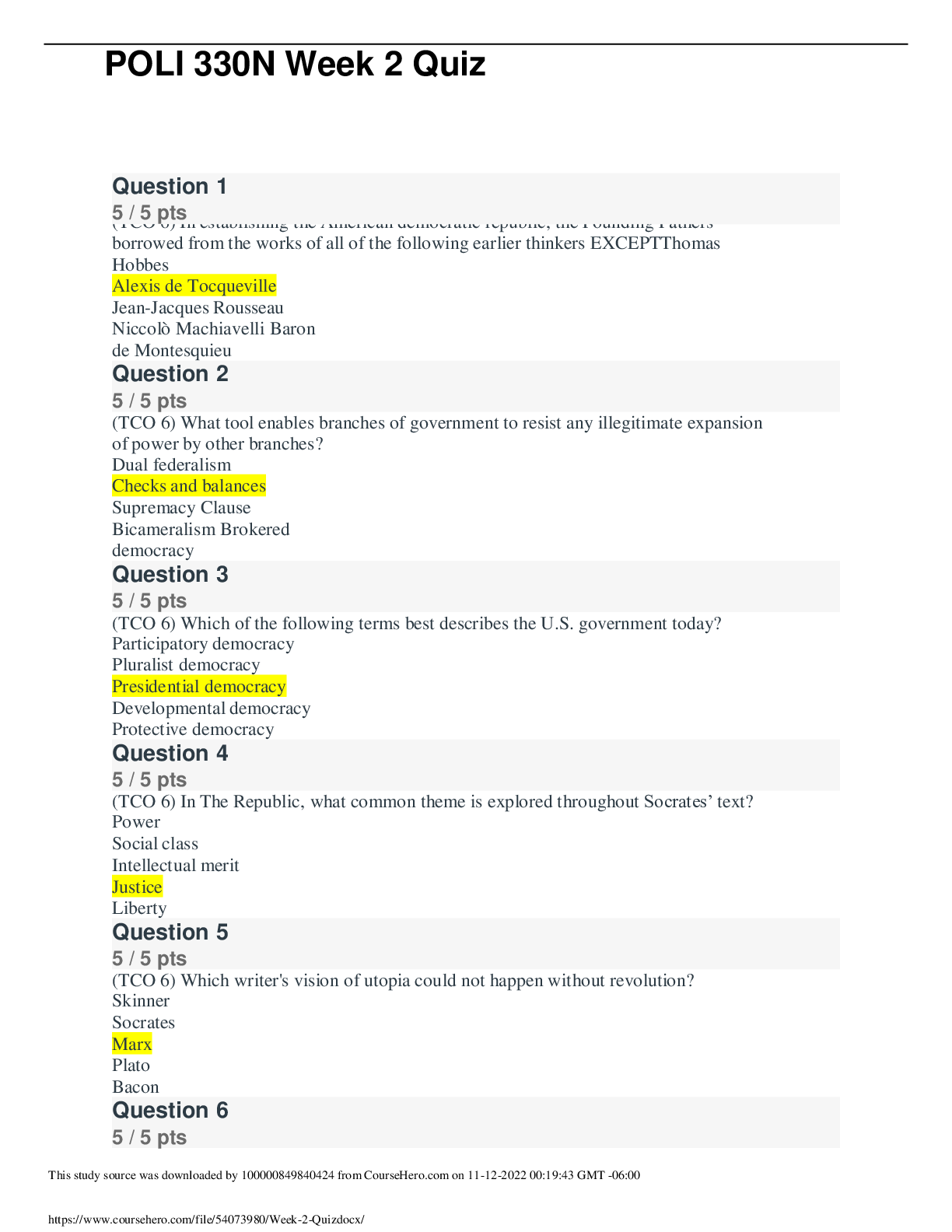
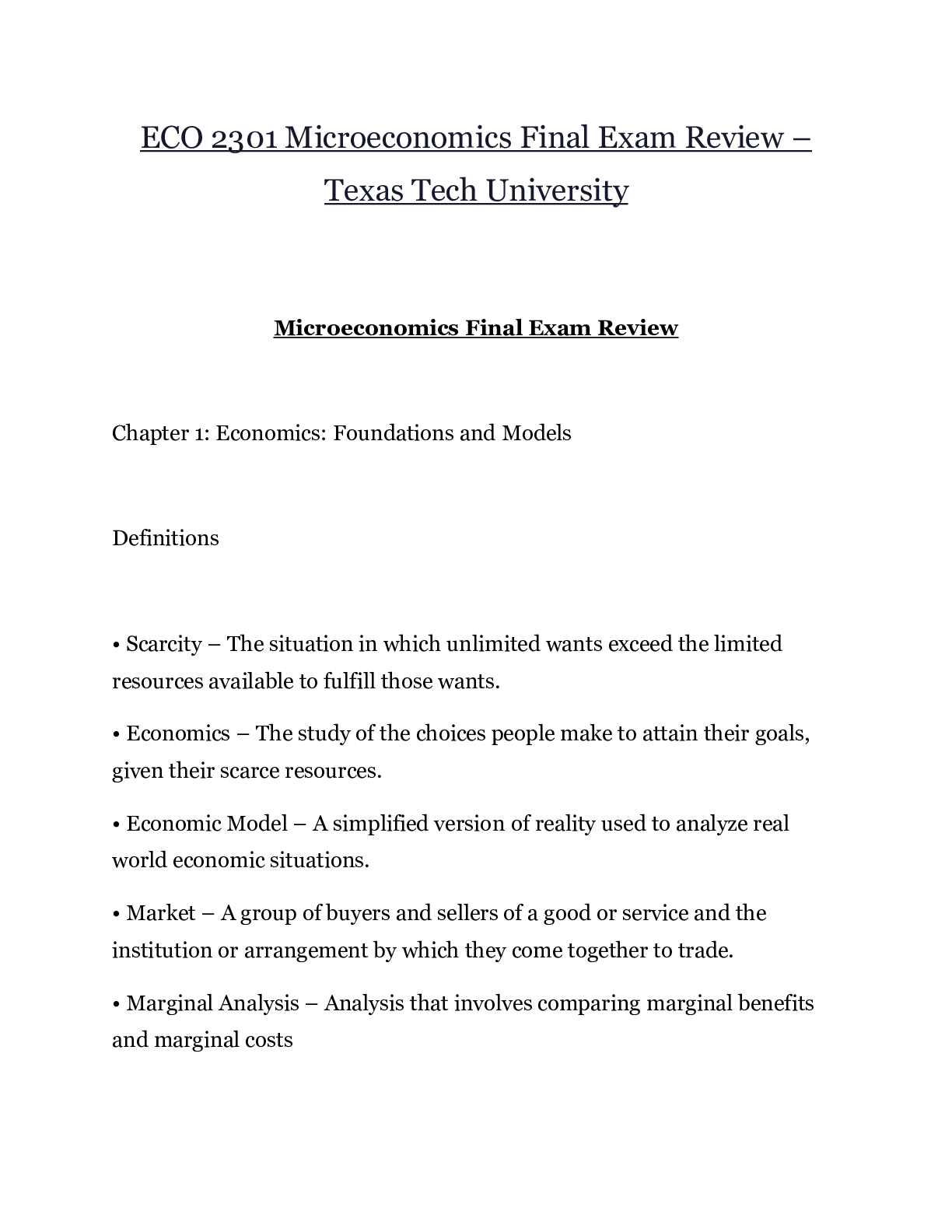
.png)

